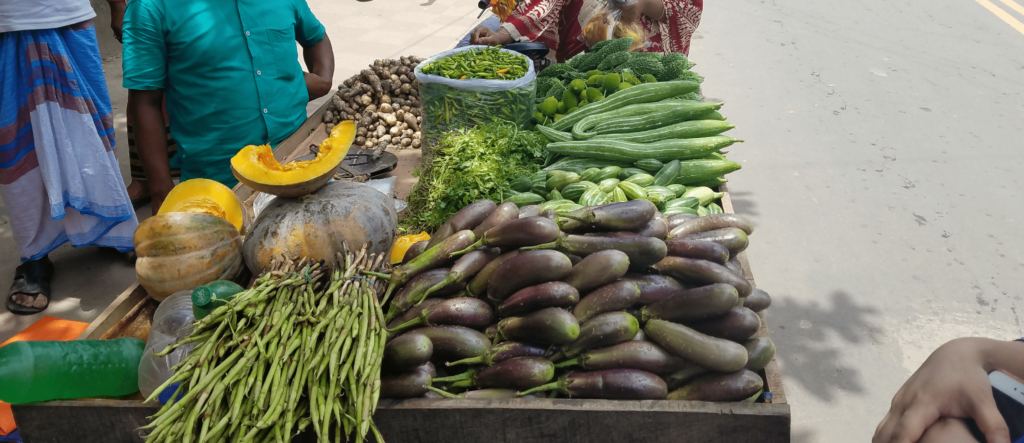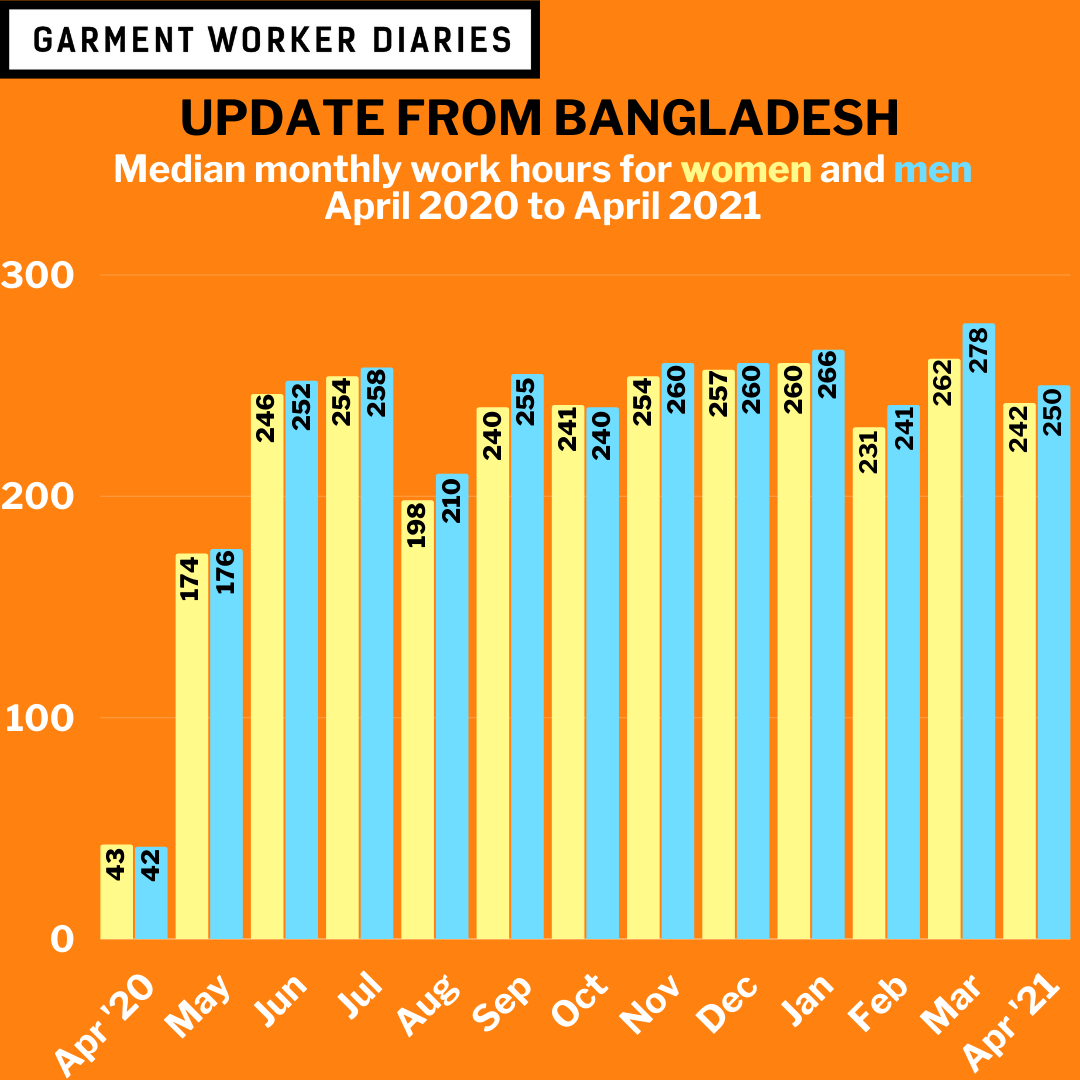A week and a half ago marked the observance of Eid al-Fitr in Bangladesh. Many garment workers would have remained at home in the ensuing days because their factories would have been closed. Any movement outside might have been risky anyways, as the Bangladeshi government had decided to extend its COVID-19 lockdown until at least May 23rd (and it appears that a slightly less stringent lockdown will remain in place until May 30th).
We’ve written before about how the biannual Eid cycle and what it means for garment workers has remained unbroken throughout the pandemic: workers receive a bonus payment from their factories and get to spend time at home or back in their villages, sharing what they have earned with family and friends.
As MFO and SANEM mark the thirteenth month of unbroken data collection in Bangladesh, we hope that garment workers will have found some relief this month in the predictability of tradition.
As for the data, here’s where the study has ended up through the end of April 2021…
Note: We previously reported work hours for April 2021 incorrectly. The numbers reported were those for March 2021. We have updated the infographic above, as well as the text in the body below with the April 2021 data.
Employment
In April 2021 the rate of employment for garment workers in Bangladesh was 87% (85% for women and 91% for men), just 1% lower than the employment rate in March. The median work hours in April were 246 (242 for women and 250 for men).
Of the unemployed respondents in the study, 55% said the reason they didn’t work in April 2021 was because they quit, a higher proportion than in any prior month. Other unemployment reasons were similar in April compared to past months, the exception being that one of our respondents said they were quarantining at home, and thus could not show up for work.
Salary Payments
86% of respondents received a salary payment in April 2021 for their March work hours, while the median salary payment in April, Tk. 11,000, was again identical to March (Tk. 10,500 for women and Tk. 12,000 for men).
About 10% of respondents received additional income from their factory, a bit higher than normal. None of the respondents indicated that this was an Eid bonus, however, but we wouldn’t be expecting to see Eid bonuses until this month anyways. Once we finish analyzing data through the end of May, we might find out that some of these additional factory payments in April were actually premature Eid bonuses. If they weren’t, we might need to investigate further.
Digital Payments and Financial Transactions
The proportion of respondents receiving either a digital or a cash salary payment in April 2021 was nearly identical to the proportion in March: about 55% received a digital payment; about 44% received a cash payment; and less than 1% received a mix of digital and cash money.
The frequency of other financial transactions and the amounts transacted remained similar to prior months. It might be worth noting that the median rent amount has crept up from Tk. 3,000 one year ago to Tk. 3,300 in April 2021. About two out of every three garment workers continue to make a rent payment each month.
Food Security and Health
Food security rates in April 2021 dipped down 1% for workers and heads of households compared to the food security rate in March. For workers’ children, the food security rate ticked up a percentage point, the one bright spot. For ten straight months, from April 2020 to February 2021, food security for workers and heads of households had improved, finally decreasing in March. We’d hoped last month that this downward trend would reverse itself. It seems we’ll have to wait another month to find out if it will.
Meanwhile, household illness rates as reported by women ticked up a few percentage points, and household illness rates as reported by men dropped a couple points. The overall rate was just 1% higher in April than in March, and so hopefully this rate will continue its overall downward trajectory.
The data are drawn from interviews with about 1,300 workers interviewed weekly from April 2020 to April 2021. The number of worker responses in a particular month vary depending on interview participation rates throughout the month, but were never below 1,206 during this period. These workers are employed in factories spread across the five main industrial areas of Bangladesh (Chittagong, Dhaka City, Gazipur, Narayanganj, and Savar). Just over three-quarters of the working respondents are women, roughly representative of workers in the sector as a whole.





